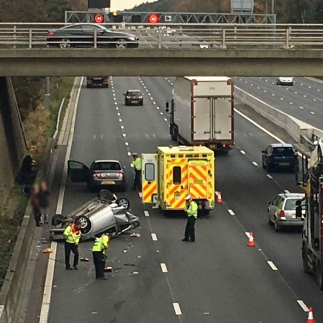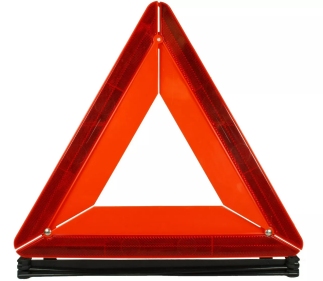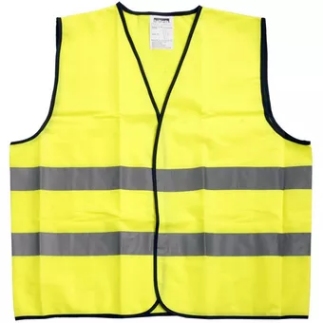Just
how smart are these "smart motorways" with no hard shoulder
for a stranded vehicle?
Many drivers feel very uncertain over using the nearside lane on
so called "smart motorways" - but what do you do to
avoid possible dangers that could develop if a stranded car is ahead
in the nearside lane with no hard should upon which it could escape?
Some drivers have chosen not to use the nearside lane on smart
motorways even though they do not approve of so called CLODS
on normal motorways ("centre lane owner drivers") hogging
that lane. From the second or third lane the driver's view ahead is
wider so a breakdown in the nearside lane can be spotted more readily
and much sooner.
Red Warning Triangles & Hi Vis Vests are available at Halfords.
See alongside.
Be Seen Screen
Helping you to be seen in a roadside emergency. They are bright and
reflective. There are tabs with a sucker in each corner of the screen
to fix it to the back of the stranded vehicle. The Be Seen Screen
means that you don't have to walk back 45 metres (147 ft) on the side
of the road to place a red warning triangle.
£45.95 including VAT with 20% off for readers of their
advert in the November 2021 issue of Safety Fast!
www.be-seen-screen-co.uk

Posted: 211115 |
 |
Many
drivers feel very uncertain over using the nearside lane on
so called smart motorways
The prospect of their seeing a stranded vehicle in the nearside
lane ahead of them and needing to make a rapid decision to brake
and then look behind to make another rapid decision on whether
to continue hard braking or making a move out into the second
lane is a concern many drivers have reflected upon. That urgent
process also includes glancing behind to assess the danger of
vehicles piling into you as you slow down to a halt behind the
stranded vehicle ahead or whether you can escape into that second
lane. By any standard those decisions, probably made in less
than 5 to 10 seconds, will be vital for your safety - and quite
likely heart stopping too!
Yes modern technology monitoring the lanes on that section of
smart motorway may have posted prompt Red
X alerts on overhead gantries closing the nearside
lane, but it will take time for drivers to see those alerts
and respond by slowing down very rapidly. That initial period
is the danger zone. Just how smart are they? (Get
Surrey) |
Leaving
a stranded vehicle by the nearside door and leaping over the
side barrier and getting well away into the scrub alongside
the motorway is an option but only if there are no vehicles
close behind you. But remember if the traffic was being speed
controlled at say 60mph then the vehicles behind will be closing
on a stranded vehicle at 88 ft/second - that's 29 yards a second.
Assuming it might take 10 seconds to make a decision and rapidly
exit a car via the nearside door, that would need a vehicle
to be at least about 300 yards behind you to give you time for
the escape. If it is closer then remaining strapped in your
vehicle will be the less dangerous option in most cases.
If you can make it to a layby on a smart motorway then using
your emergency flashers and any signage indicating a breakdown
will be wise - plus getting out of the vehicle and well away
from the barrier. Remember if vehicles crash into metal roadside
barriers the metal rail section can thrash around like a whip
and decapitate anyone nearby - so get well away and rapidly! |
 |
 |
Red
Warning Triangle
Warn other road users when you have broken down with the Halfords
Car Warning Triangle. You should place your warning triangle
on the same side of the road as your vehicle, and at least 45
metres (147 feet) behind it. It has folding legs so it can be
positioned to be visible to oncoming vehicles.
£12.99 at Halfords |
Hi
Vis Vest
Fluorescent and reflective making it effective in the day, in
poor visibility and at night. Keep it in your glove box or arm
rest in your MGV8 so it's immediately to hand if you should
breakdown. Wearing the Hi Vis Vest helps oncoming drivers from
behind your stranded vehicle spot you much sooner.
£6.99 at Halfords |
|






